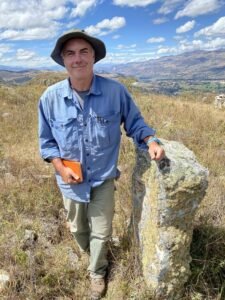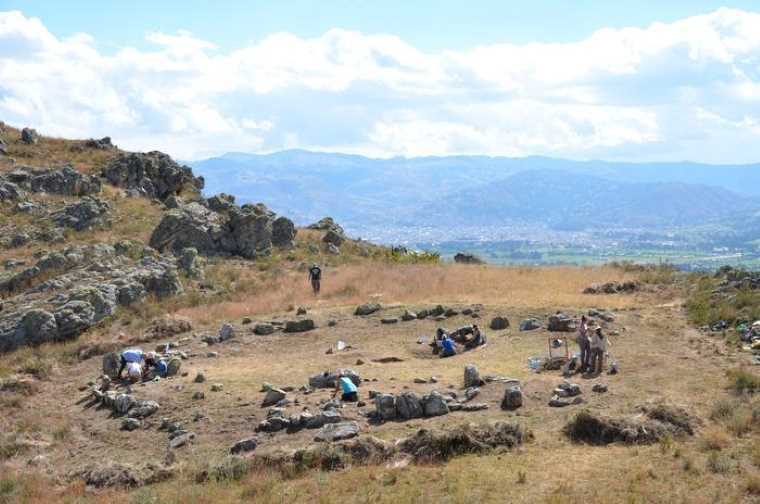A team of anthropologists from the University of Wyoming (UW) and the University of California, Santa Barabara, has discovered an ancient megalithic structure in the Peruvian Andes that is older than the Great Pyramids of ancient Egypt.
Dated to around 2,750 B.C., using radiocarbon dating techniques, the circular stone plaza was built using massive vertical stones placed in upright positions. This construction method is similar to other ancient sites from the ancient world, like Stonehenge, which is approximately the same age as the newly discovered stone plaza. However, the researchers say it is a construction style “previously unseen” in the Andes.
“This structure was built approximately 100 years before the Great Pyramids of Egypt and around the same time as Stonehenge,” explained UW Associate Professor Jason Toohey, who is the lead researcher on the project, in a post announcing the team’s findings.
Research on the unique site, which is located at the Callacpuma archaeological site in the Cajamarca Basin of northern Peru, started as far back as 2015. But the actual excavations of the megalithic structure and its surroundings didn’t begin until 2018. Since then, numerous artifacts “related to life in the past” have been discovered, along with charcoal samples that provided the radiocarbon dates.
Measured at around 60 feet in diameter, the ancient megalithic structure consists of two concentric circles of massive stones placed upright. Significantly, the huge stones are held in place without any mortar. The researchers say that this method of construction is not only extremely unusual compared to other Stone Age sites previously discovered in the Andes but is one that has never been seen before in the local area. The researchers also point out that the ancient site is one of the oldest, if not the oldest, megalithic structures ever found in the Andes, predating many more famous sites from around the world.
While no inscriptions describing the intended function of the ancient megalithic structure have been found at the site, the researchers say that they have retrieved many clues as to its purpose and origin.
“It was probably a gathering place and ceremonial location for some of the earliest people living in this part of the Cajamarca Valley,” explained Toohey. “These people were living a primarily hunting-and-gathering lifestyle and probably had only recently begun growing crops and domesticating animals.”
A biological anthropologist specializing in bioarchaeology who has been working in the area since 2003, Toohey was joined by fellow project leader Patricia Chirinos Ogata from the University of California-Santa Barbara as well as fellow UW staffer Professor Melissa Murphy. Together, the researchers have been working to reconstruct Peru’s ancient past while also collaborating with local authorities to preserve the history of the indigenous peoples.


“As part of our community outreach, we collaborate and work with the residents of the towns on and adjacent to the site of Callacpuma about our findings and their importance,” Toohey says. “We highlight the importance of cultural heritage and, working together, we can continue the scientific investigations and help to preserve the site.”
A detailed accounting of the team’s findings and methods is published in the journal Science Advances under the title: ‘A monumental stone plaza at 4750 B.P. in the Cajamarca Valley of Peru.’
Christopher Plain is a Science Fiction and Fantasy novelist and Head Science Writer at The Debrief. Follow and connect with him on X, learn about his books at plainfiction.com, or email him directly at christopher@thedebrief.org.

